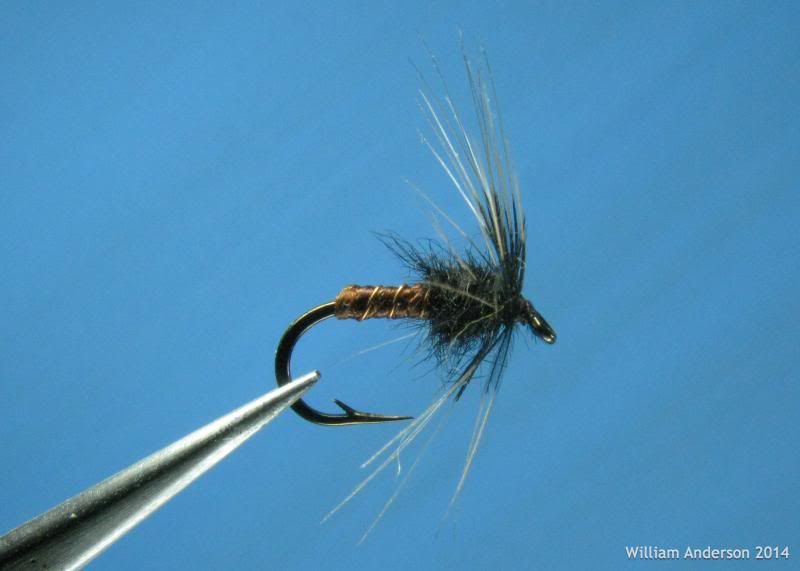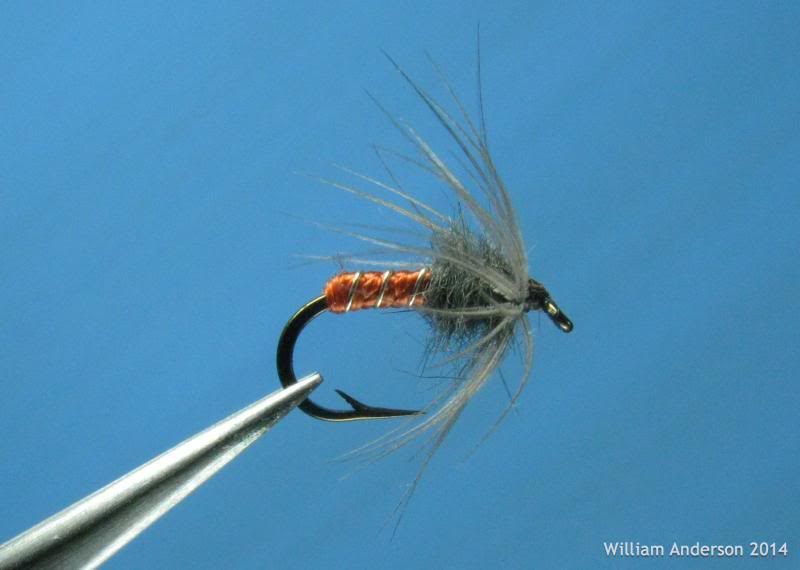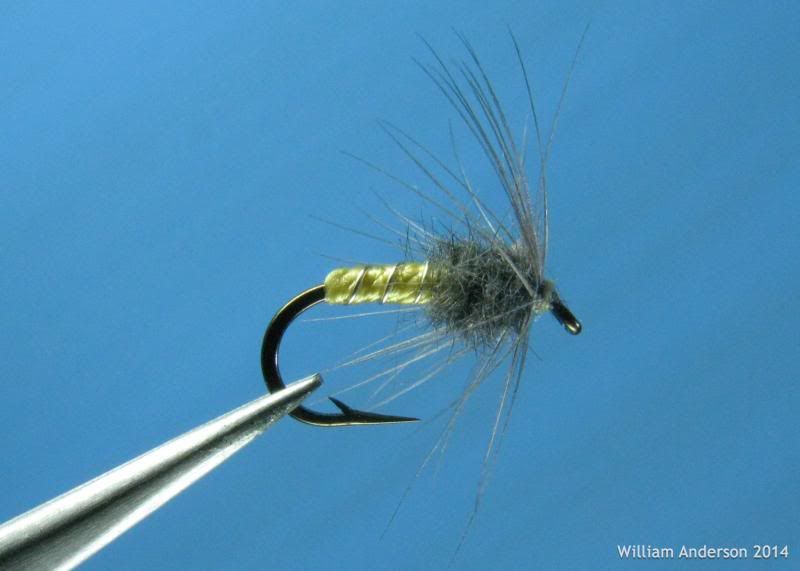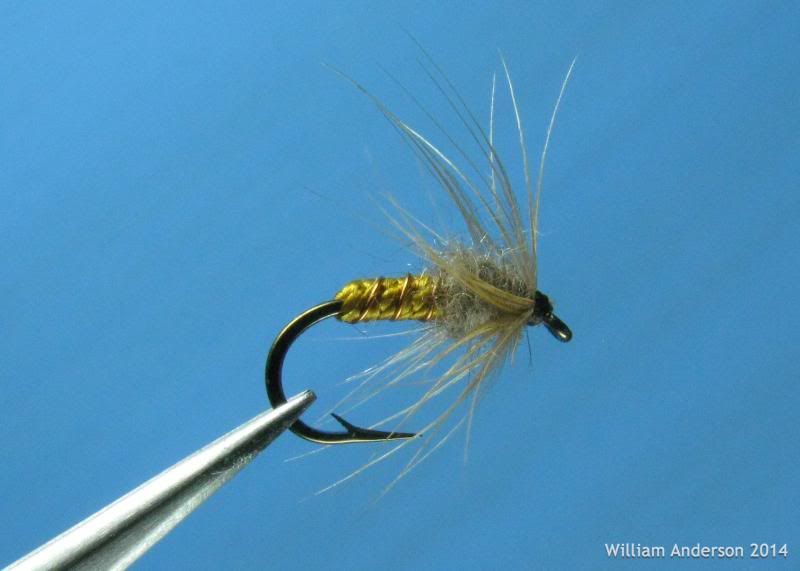I should have read this before, I forgot the content of this thread. There is great information that answers some of the questions: http://flymphforum.com/viewtopic.php?f=5&t=5319
Please pile on with your own opinions and comments, as well as other flies that help to further the thinking behind the persistence popularity of this pattern Style. '
Here are some samples. Each tied on a Vintage Mustad 57552 #14 and Belding Corticelli Buttonhole Size D Silk.
Half Brown
Furnace hen hackle, mole thorax and buttonhole silk #5210

Half Orange
Medium dun hen hackle, mole thorax and buttonhole silk #4425 (a pinkish orange color)

Half Pale
Light ginger dun hen hackle, beaver thorax and buttonhole silk #5330 (a very pale tan color)

Half Stone
Medium dun hen hackle, mole thorax and buttonhole silk #3030 (slightly more yellow than primrose)

Half Golden
Medium ginger dun hen hackle, beaver thorax and buttonhole silk #3715 (more golden-olive than a gold thread)

Any comments of further explanation about tying and fishing flies in this construction style would be greatly appreciated.
w
